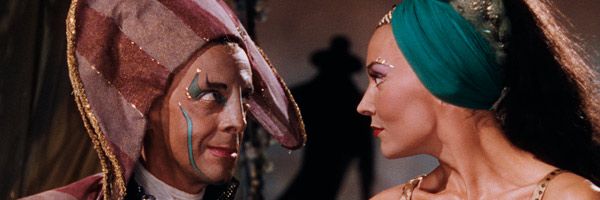Decades ago, when Martin Scorsese and Thelma Schoonmaker were cutting Scorsese's legendary film Raging Bull, he watched a 16mm print of The Red Shoes director Michael Powell's film The Tales of Hoffmann over and over again. Suddenly, in the middle of the edit, his assistant came in and said, "The Museum of Modern Art needs the print back." Irritated, Scorsese asked why. Another filmmaker, also obsessed with the film, needed the print. That filmmaker was none other than Night of the Living Dead director George Romero. As one of Powell's lesser known films, Hoffmann has slipped under the radar for many, but as this anecdote tells, there's no denying the impact it's had on modern cinema.
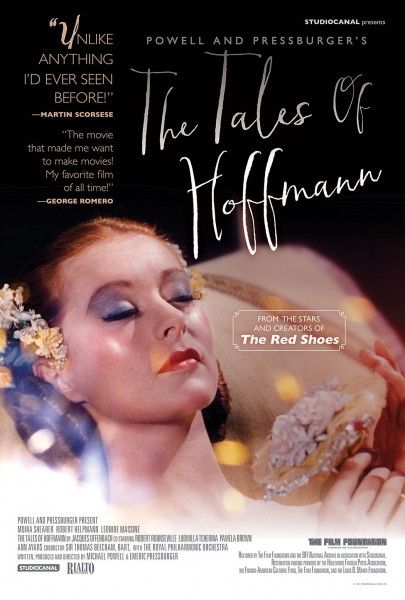 Image via Rialto Pictures[/caption]
I recently had the amazing opportunity to speak with Martin Scorsese's longtime collaborator and editor Thelma Schoonmaker about the revival of her late husband's beloved film. We talked about why she's so passionate about film preservation, how Hoffmann influenced Scorsese as a filmmaker, the additional footage included in the new restoration, and more.
Collider: You have worked with Marty on a number of film preservation projects. Why are you so passionate about it?
THELMA SCHOONMAKER: From the moment I met Martin Scorsese in 1962, he educated me about the films that had taught him so much about filmmaking. He had been deeply affected, even as a child by great films that stretched his mind and struck into his heart, and he was eager to share them with friends and people who worked with him or with actors who were in his films. So he was always encouraging all of us to rush to the wonderful art houses in New York to watch films he admired and to talk about them with us at length afterwards. He infected me with his enthusiasm early in our working relationship and I too fell in love with powerful works of art that affected me deeply and changed my world, particularly the films of Michael Powell and Emeric Pressburger.
Marty had noticed that some of the films we were watching had turned pink, which we learned meant that they were fading badly and would soon be unwatchable. We were shocked to discover this and Marty began a campaign to convince Eastman Kodak to change their film stock so that this deterioration would stop – or at least be slowed. He began giving talks to alert people to the danger of losing prints and their original negatives if something wasn’t done to preserve films better. I accompanied him on the publicity tour for Raging Bull so I could help him give talks about film preservation all over the world.
Eventually, Marty set up the Film Foundation, which is dedicated to the preservation of film, and has raised the funds to restore over 50 films already, among them three films by Powell and Pressburger (The Red Shoes, The Life and Death of Colenel Blimp, and now The Tales of Hoffmann). I have only been involved in the restoration of those three films, but cannot stress enough how desperate the need is for film preservation. 80% of silent films were lost, which is a tragedy. Now we must try to ensure that we don’t match that awful record with later films.
[caption id="attachment_424827" align="alignright" width="360"]
Image via Rialto Pictures[/caption]
I recently had the amazing opportunity to speak with Martin Scorsese's longtime collaborator and editor Thelma Schoonmaker about the revival of her late husband's beloved film. We talked about why she's so passionate about film preservation, how Hoffmann influenced Scorsese as a filmmaker, the additional footage included in the new restoration, and more.
Collider: You have worked with Marty on a number of film preservation projects. Why are you so passionate about it?
THELMA SCHOONMAKER: From the moment I met Martin Scorsese in 1962, he educated me about the films that had taught him so much about filmmaking. He had been deeply affected, even as a child by great films that stretched his mind and struck into his heart, and he was eager to share them with friends and people who worked with him or with actors who were in his films. So he was always encouraging all of us to rush to the wonderful art houses in New York to watch films he admired and to talk about them with us at length afterwards. He infected me with his enthusiasm early in our working relationship and I too fell in love with powerful works of art that affected me deeply and changed my world, particularly the films of Michael Powell and Emeric Pressburger.
Marty had noticed that some of the films we were watching had turned pink, which we learned meant that they were fading badly and would soon be unwatchable. We were shocked to discover this and Marty began a campaign to convince Eastman Kodak to change their film stock so that this deterioration would stop – or at least be slowed. He began giving talks to alert people to the danger of losing prints and their original negatives if something wasn’t done to preserve films better. I accompanied him on the publicity tour for Raging Bull so I could help him give talks about film preservation all over the world.
Eventually, Marty set up the Film Foundation, which is dedicated to the preservation of film, and has raised the funds to restore over 50 films already, among them three films by Powell and Pressburger (The Red Shoes, The Life and Death of Colenel Blimp, and now The Tales of Hoffmann). I have only been involved in the restoration of those three films, but cannot stress enough how desperate the need is for film preservation. 80% of silent films were lost, which is a tragedy. Now we must try to ensure that we don’t match that awful record with later films.
[caption id="attachment_424827" align="alignright" width="360"]
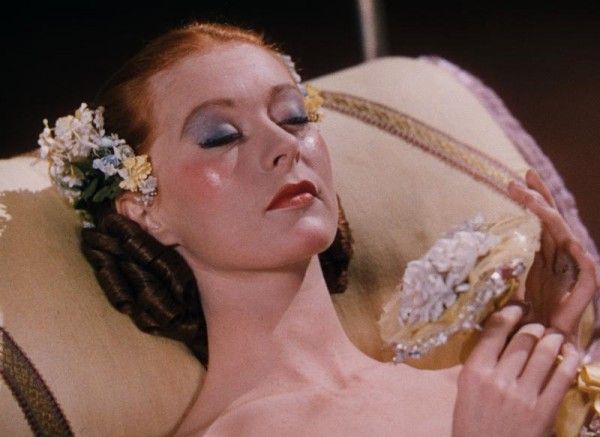 Image via Rialto Pictures[/caption]
All you have to know is that Martin Scorsese would not be the director he is today if he hadn’t been able to study intensely the works of other filmmakers who went before him and whom he revered, because of what their films taught him. To say nothing of the effect these films have on millions of people. It is unthinkable that we should lose them.
Tell me about the process of restoring The Tales of Hoffmann
SCHOONMAKER: A previous restoration of The Tales of Hoffmann by the British Film Institute had been made from an Interpositive, which is an element that is one step removed from the original negative. Fortunately, through his Film Foundation, Scorsese was able to raise the substantial amount of money needed to restore HOFFMANN from the original three-strip camera negative, which was in relatively good shape. This allowed Ned Price and Ray Grabowski at Motion Picture Imaging on the Warner Bros. lot to correct issues the previous restoration couldn’t address.
For example, by the time the interpositive was made the three strips of film had shrunk at different rates, which meant that the previous restoration sometimes had blurred images. The new restoration was able to digitally realign the three strips perfectly. The rich color of the film was rebuilt layer by layer, an arduous process, until the restorers were satisfied the film looked as it had when it was first made. Scorsese knew the film intimately, having screened it many times on a 16mm print and through watching the Criterion DVD over and over again. I had watched the film with my late husband, Michael Powell and so Scorsese and I were able to guide the color restoration. We also had several prints of the film that were very helpful for comparison.
[caption id="attachment_424819" align="alignright" width="360"]
Image via Rialto Pictures[/caption]
All you have to know is that Martin Scorsese would not be the director he is today if he hadn’t been able to study intensely the works of other filmmakers who went before him and whom he revered, because of what their films taught him. To say nothing of the effect these films have on millions of people. It is unthinkable that we should lose them.
Tell me about the process of restoring The Tales of Hoffmann
SCHOONMAKER: A previous restoration of The Tales of Hoffmann by the British Film Institute had been made from an Interpositive, which is an element that is one step removed from the original negative. Fortunately, through his Film Foundation, Scorsese was able to raise the substantial amount of money needed to restore HOFFMANN from the original three-strip camera negative, which was in relatively good shape. This allowed Ned Price and Ray Grabowski at Motion Picture Imaging on the Warner Bros. lot to correct issues the previous restoration couldn’t address.
For example, by the time the interpositive was made the three strips of film had shrunk at different rates, which meant that the previous restoration sometimes had blurred images. The new restoration was able to digitally realign the three strips perfectly. The rich color of the film was rebuilt layer by layer, an arduous process, until the restorers were satisfied the film looked as it had when it was first made. Scorsese knew the film intimately, having screened it many times on a 16mm print and through watching the Criterion DVD over and over again. I had watched the film with my late husband, Michael Powell and so Scorsese and I were able to guide the color restoration. We also had several prints of the film that were very helpful for comparison.
[caption id="attachment_424819" align="alignright" width="360"]
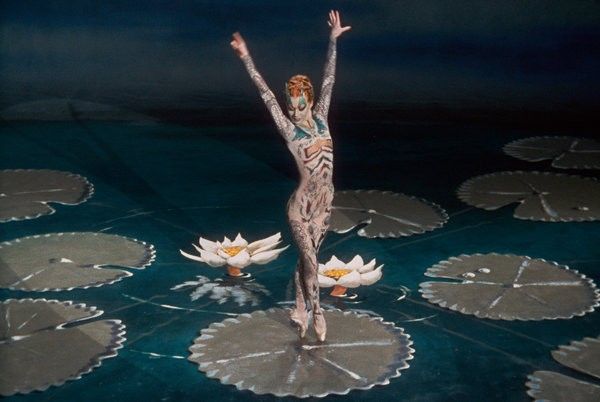 Image via Rialto Pictures[/caption]
The restored version of the film includes six additional minutes. What can you tell me about that footage?
SCHOONMAKER: We had heard for years that fans of the film felt there were missing sections of Hoffmann that had probably been cut by the producer, Alexander Korda who wanted Powell and Pressburger to drop the Third Act entirely. They refused, but it appears Korda got his way eventually by dropping the six minutes. The British Film Institute scoured their vaults and did come up with a six-minute missing section in the Third Act of Hoffmann and also a remarkable epilogue to the film that no one had ever seen, in which the opera singers who voice the dancers in the film were introduced. It is a very witty sequence, but no sound track was found for it so I created a sound track of applause and music from the film. No one had ever seen this epilogue, because it was never on the original release prints.
The missing 6 minutes of the Third Act are important because you see the father of Antonia, the singer who will die if she continues to sing because she has tuberculosis, get very angry with his daughter because he fears she will not stop singing. You also see the father get angry with the gardener who is deaf and misconstrues what the father is telling him – that he doesn’t want Hoffmann to see his daughter because he will make her sing again. Losing this section seriously undercut Act Three and Michael Powell and Emeric Pressburger were very upset when the cut was made. So Scorsese and I are thrilled that Act Three is now back to its original form.
Both Scorsese and George Romero have spoken about how The Tales of Hoffmann influenced them as filmmakers. Why do you think the film resonates with directors?
[caption id="attachment_424823" align="alignright" width="360"]
Image via Rialto Pictures[/caption]
The restored version of the film includes six additional minutes. What can you tell me about that footage?
SCHOONMAKER: We had heard for years that fans of the film felt there were missing sections of Hoffmann that had probably been cut by the producer, Alexander Korda who wanted Powell and Pressburger to drop the Third Act entirely. They refused, but it appears Korda got his way eventually by dropping the six minutes. The British Film Institute scoured their vaults and did come up with a six-minute missing section in the Third Act of Hoffmann and also a remarkable epilogue to the film that no one had ever seen, in which the opera singers who voice the dancers in the film were introduced. It is a very witty sequence, but no sound track was found for it so I created a sound track of applause and music from the film. No one had ever seen this epilogue, because it was never on the original release prints.
The missing 6 minutes of the Third Act are important because you see the father of Antonia, the singer who will die if she continues to sing because she has tuberculosis, get very angry with his daughter because he fears she will not stop singing. You also see the father get angry with the gardener who is deaf and misconstrues what the father is telling him – that he doesn’t want Hoffmann to see his daughter because he will make her sing again. Losing this section seriously undercut Act Three and Michael Powell and Emeric Pressburger were very upset when the cut was made. So Scorsese and I are thrilled that Act Three is now back to its original form.
Both Scorsese and George Romero have spoken about how The Tales of Hoffmann influenced them as filmmakers. Why do you think the film resonates with directors?
[caption id="attachment_424823" align="alignright" width="360"]
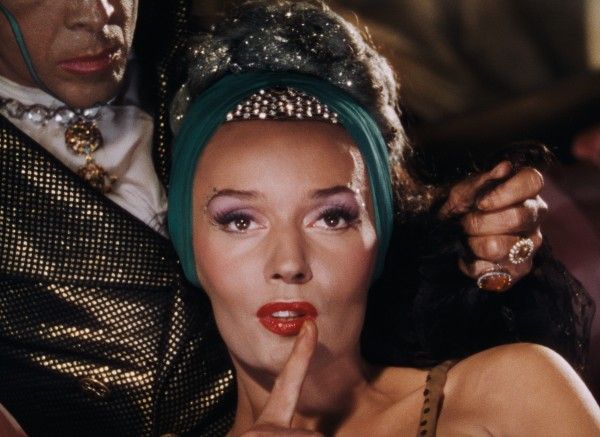 Image via Rialto Pictures[/caption]
SCHOONMAKER: Scorsese says the film taught him how to give the camera a fluent feel. He says the camera dances in Hoffmann – the camera is the choreographer. He admires the daring style and freedom in the film to do anything! He says the dancers in the film taught him so much about body language. And the eye movements of Robert Helpmann were a direct influence on De Niro’s eyes in the mirror of the car in TAXI driver. He loves how simply visual tricks are done – just straight cuts between Helpmann gathering candle wax in his hands and then a straight cut to jewels in his hand. Or the staggeringly effective way that Moira Shearer is torn apart – using black velvet in the simplest way – no digital effects, just good ideas and daring the audience to believe. The editing of the duel sequence also is brilliant, and Scorsese noted to me that you don’t hear any sounds of the sword fighting – just the beautiful Bacarolle music.
The image of Tcherina underwater singing is like the work of Stan Brakhage, an avant garde filmmaker in the 1960’s. The idea of having the chorus, which would ordinarily be plunked down in a group upon the stage be puppets instead, who are also human, but not really and who shift back to being puppets at a moment’s notice, is something Scorsese admires greatly. Great ideas – not a lot of money.
I can’t speak for George Romero, but he does talk about the film on the Criterion laser disc.
[caption id="attachment_424817" align="alignright" width="360"]
Image via Rialto Pictures[/caption]
SCHOONMAKER: Scorsese says the film taught him how to give the camera a fluent feel. He says the camera dances in Hoffmann – the camera is the choreographer. He admires the daring style and freedom in the film to do anything! He says the dancers in the film taught him so much about body language. And the eye movements of Robert Helpmann were a direct influence on De Niro’s eyes in the mirror of the car in TAXI driver. He loves how simply visual tricks are done – just straight cuts between Helpmann gathering candle wax in his hands and then a straight cut to jewels in his hand. Or the staggeringly effective way that Moira Shearer is torn apart – using black velvet in the simplest way – no digital effects, just good ideas and daring the audience to believe. The editing of the duel sequence also is brilliant, and Scorsese noted to me that you don’t hear any sounds of the sword fighting – just the beautiful Bacarolle music.
The image of Tcherina underwater singing is like the work of Stan Brakhage, an avant garde filmmaker in the 1960’s. The idea of having the chorus, which would ordinarily be plunked down in a group upon the stage be puppets instead, who are also human, but not really and who shift back to being puppets at a moment’s notice, is something Scorsese admires greatly. Great ideas – not a lot of money.
I can’t speak for George Romero, but he does talk about the film on the Criterion laser disc.
[caption id="attachment_424817" align="alignright" width="360"]
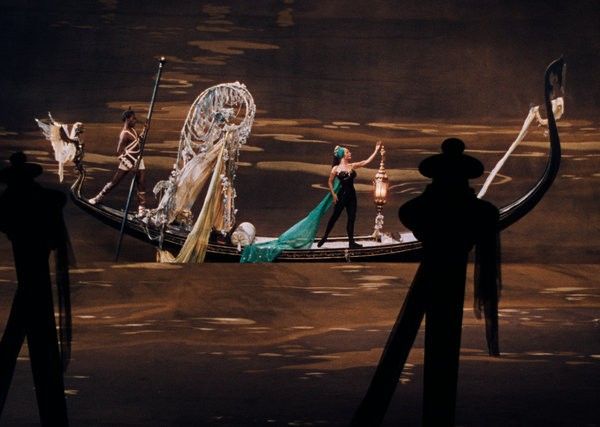 Image via Rialto Pictures[/caption]
In the age of mega-blockbusters, why do you think Hoffmann will appeal to modern audiences?
SCHOONMAKER: I think the fact that the whole movie is driven by the music is perhaps going to appeal to a generation brought up with music videos. The ballet sequence in The Red Shoes is perhaps the first music video, and Hoffmann is a whole feature film that is like a music video – the music is the master and the visuals are built around that music, and evoke the emotion of the opera. I hope they will also admire the wild design of the film – the brilliant colors and style.
The films you've made with Marty have influenced a countless number. What are the films that inspire you?
SCHOONMAKER: So many it is hard to discuss. The films of Powell and Pressburger foremost. Scorsese's Mean Streets and Italian American. Cassavetes' Faces, Rossellini's Paisa and The Flowers of Saint Francis, and there are so many more.
Image via Rialto Pictures[/caption]
In the age of mega-blockbusters, why do you think Hoffmann will appeal to modern audiences?
SCHOONMAKER: I think the fact that the whole movie is driven by the music is perhaps going to appeal to a generation brought up with music videos. The ballet sequence in The Red Shoes is perhaps the first music video, and Hoffmann is a whole feature film that is like a music video – the music is the master and the visuals are built around that music, and evoke the emotion of the opera. I hope they will also admire the wild design of the film – the brilliant colors and style.
The films you've made with Marty have influenced a countless number. What are the films that inspire you?
SCHOONMAKER: So many it is hard to discuss. The films of Powell and Pressburger foremost. Scorsese's Mean Streets and Italian American. Cassavetes' Faces, Rossellini's Paisa and The Flowers of Saint Francis, and there are so many more.

